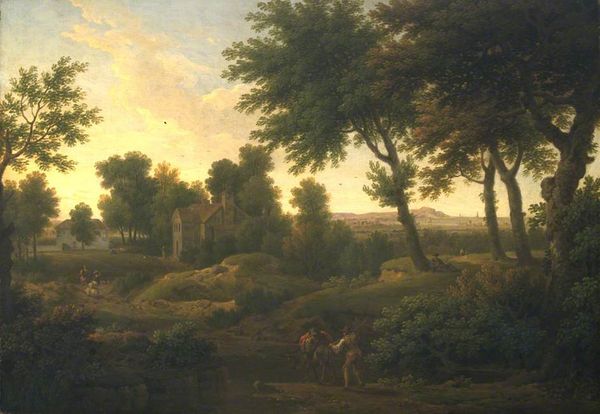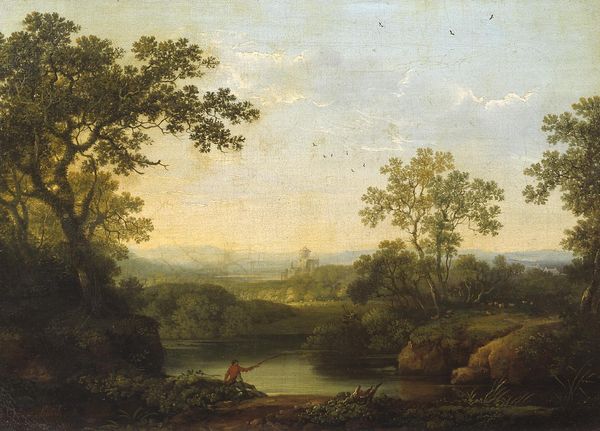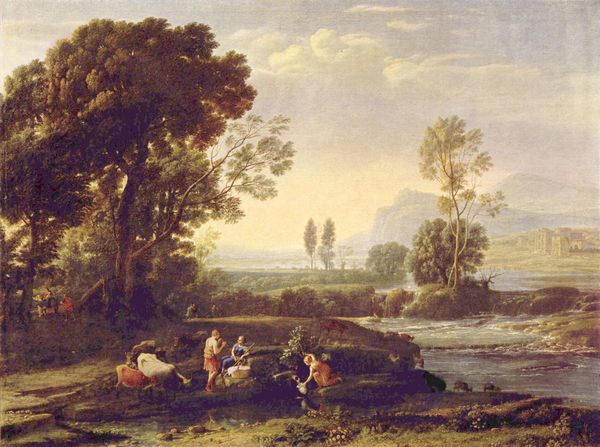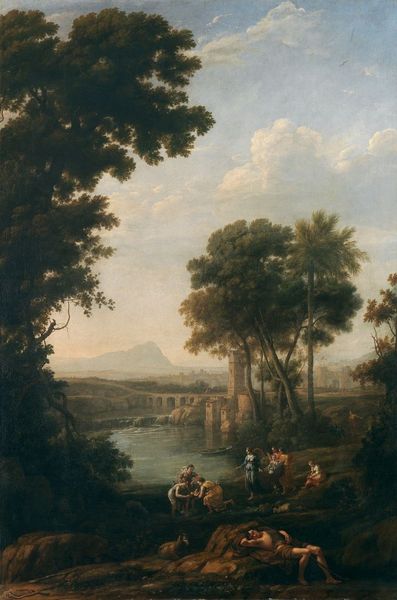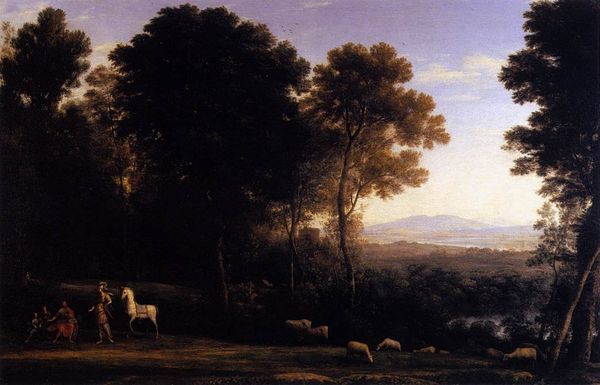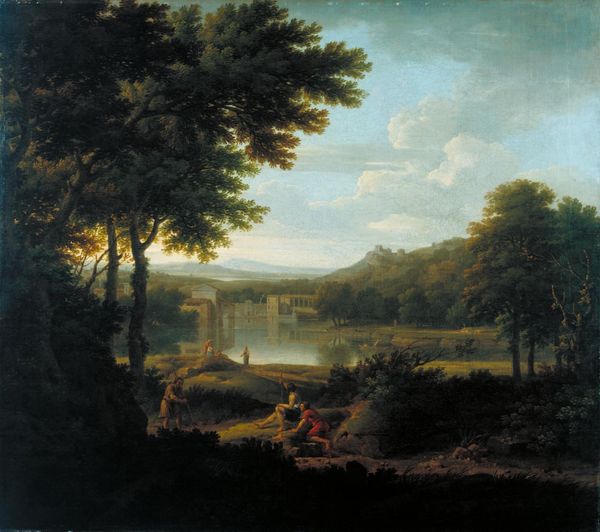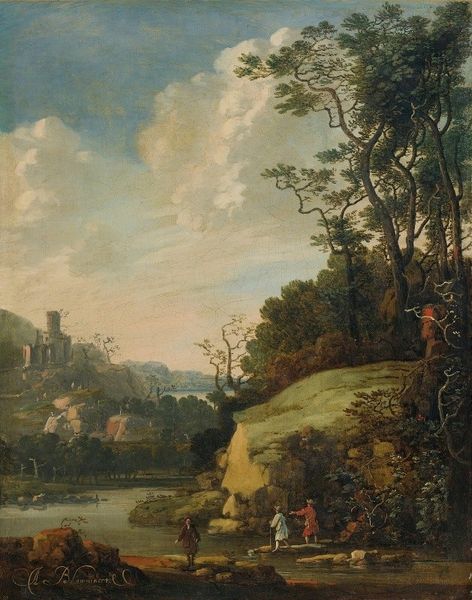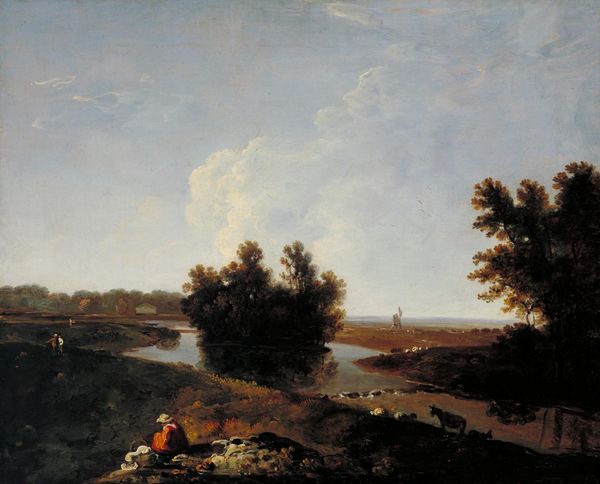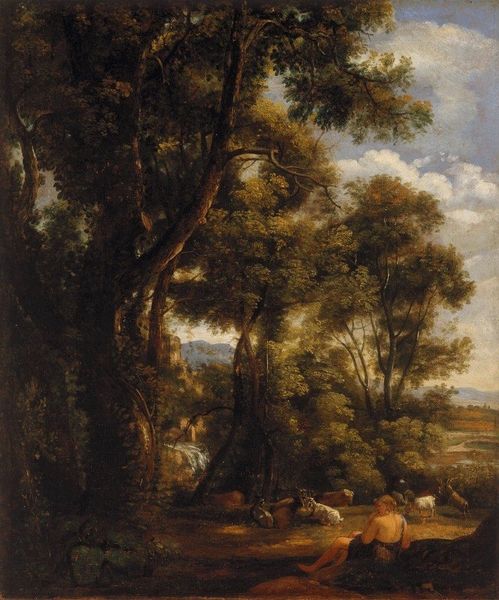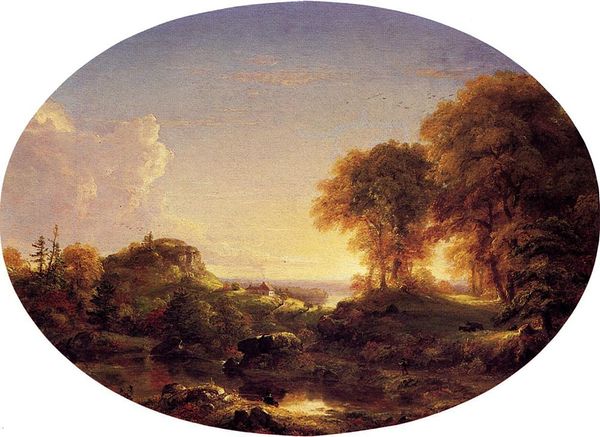
painting, oil-paint
#
tree
#
sky
#
allegory
#
baroque
#
painting
#
countryside
#
oil-paint
#
landscape
#
classical-realism
#
oil painting
#
roman-mythology
#
cloud
#
natural-landscape
#
chiaroscuro
#
mythology
#
history-painting
#
academic-art
Dimensions: 150 x 119 cm
Copyright: Public domain
Editor: So, this is Claude Lorrain’s “Landscape with Paris and Oenone,” painted in 1648. It’s oil on canvas, and hangs in the Louvre. It’s… overwhelmingly peaceful. Almost dreamlike, with the soft light. How do you interpret this work? Curator: Ah, Claude. He’s whispering secrets of Arcadia in broad daylight, isn’t he? Notice how the figures are almost secondary; mere staffage in a grand theatrical production of nature. I always get the feeling with Claude that he's inviting us, nay, compelling us, to lose ourselves in the light. Don't you feel it? It’s not just painting light; it's painting *longing* for light. That golden, hazy glow promising warmth and safety... Do you pick that up too? Editor: I see it! That explains why the mythological figures almost disappear – they’re just part of the atmosphere. So, it’s less about the story of Paris and Oenone and more about... a feeling? Curator: Precisely! The story is a convenient excuse, a pretext for mood. He paints feelings first, figures later. Imagine yourself bathed in that golden haze; that's Claude’s genius. It's as if the ancient world wasn’t that world of heroes and gods; no, instead it's a place of emotional refuge, a dreamscape for a weary soul. A truly cinematic use of paint if I ever saw one, don't you think? Editor: Definitely cinematic! I’ll never look at a landscape painting the same way again. Thanks, that really clicked. Curator: And *I*, in turn, will attempt to work "cinematic" into more art conversations... perhaps far too often. We are both enriched, young Padawan!
Comments
No comments
Be the first to comment and join the conversation on the ultimate creative platform.
